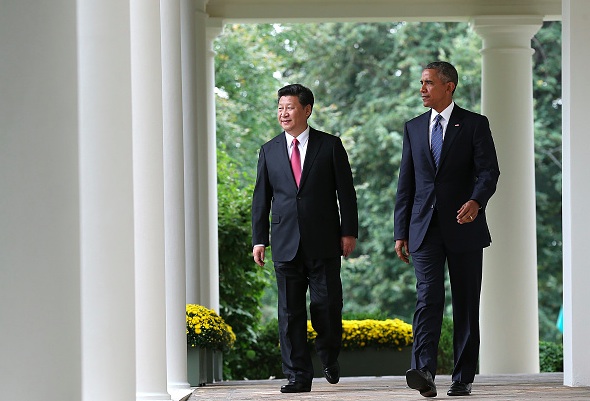By Josh Margolis

It may have come as a surprise to see Chinese President Xi Jinping at the White House and to hear the announcement that China will implement a national carbon cap and trade system. It certainly must have been a shock for those who railed against passage of an American version of this type of system in 2010 because—so they said—“China isn’t doing anything.” But it wasn’t a surprise for the Environmental Defense Fund, which has been working to help China develop and implement these market-based systems for the past 25 years.
Yes, global warming has not always been at the top of China’s agenda. In recent decades, China focused on building a modern economy and lifting hundreds of millions of its citizens out of poverty. But last week’s announcement was actually the latest step in a long, step-by-step process.
In the 1990s China applied the innovative cap and trade approach to select SO2 emitters. Then, in 2011 China directed leaders from five cities and two provinces—representing over 25% of the economy and with 250 million people—to develop and launch pilot carbon trading programs. The stated goal of the pilots to meet the 12th Five-Year Plan requirement to gradually establish national carbon trading markets and promote market mechanisms to achieve by 2020 China’s goal of controlling greenhouse gas at a low cost. Since 2013, the pilots have been launched including an aggregate carbon cap of more than 1.25 billion tonnes. These pilots have helped policy-makers road test and ready this market-based approach for a 2017 national rollout.
Skeptics of China’s commitment may overlook what might have motivated China to move forward with such a cutting-edge national policy. Controlling climate pollution is one goal, for sure. And a national cap and trade policy also demonstrates China’s commitment to addressing a global problem as world leaders prepare for the Paris climate negotiations in December. But there are other compelling reasons as to why we should believe that China means what it says: Beijing is also motivated by enlightened self-interest. A cap and trade system has important knock-on benefits—namely, reducing PM2.5 and other conventional pollutants, which contributes to elevated levels of morbidity and mortality. Putting a cap and price on pollution also encourages the use of renewables, rewards efficiency, drives green investments, and enhances energy security. And it spurs innovation, both from regulated enterprises and government policymakers.
China’s actions, together with U.S. policies—like the Clean Power Plan—should encourage other countries to reach beyond their comfort zones to commit to greater reductions. By so doing, we as a global community can end the centuries-long trend of increasing climate pollution and begin to see it decline.
Last week’s announcement is only one of the steps that China will take as it rolls out the national emissions trading system. Over the coming years, EDF will continue to support China’s efforts. But right now, we will take a moment to celebrate this important stepping-stone on the path to a safer, healthier world.
Margolis is Managing Director, Environmental Markets, at the Environmental Defense Fund. For more on China’s carbon pilots and lessons learned from other ETS, read this report (in EN and CH), co-authored by Josh Margolis and Dan Dudek of EDF and Anders Hove of the Paulson Institute.




